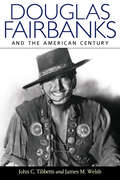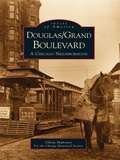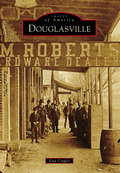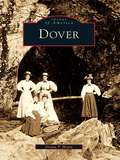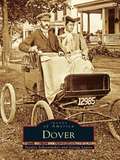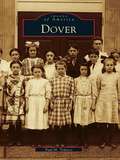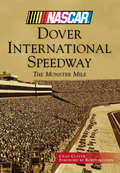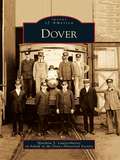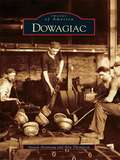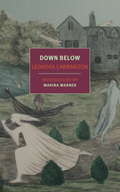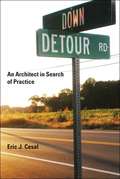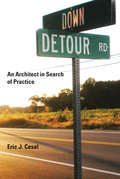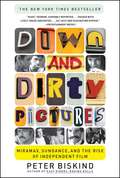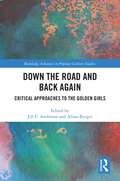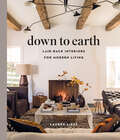- Table View
- List View
Douglas Duncan: A Memorial Portrait
by Alan JarvisThis is an unusual memorial to an unusual man. Douglas Duncan was a Torontonian who, by his patronage of the arts, has had an almost incalculable influence on their development in Canada. A bibliophile all his life, he began by espousing bookbinding as his chosen profession and after studying in Paris he returned to Toronto to set up as a bookbinder in 1928. But this was only one part of his life, and while in Paris his interest in music and painting had grown and matured. In 1936 the Picture Loan Society was founded and Duncan, at first one of the Committee, soon became solely responsible for it. It is in this capacity that his influence was greatest: literally hundreds of Canadian artists owe to him, in some measure, a debt of gratitude for sound advice, encouragement, and help generously given. Ten informal essays have been contributed by people who knew Duncan well at different times and at various stages in his career. Because each contributor concentrates on the Douglas Duncan he knew the result is a personal, vivid and immediate portrait of a very attractive man. The book also includes reproductions of paintings by some of the artists whose work Duncan encouraged and collected, and examples of his work as a bookbinder and a photographer.
Douglas Fairbanks and the American Century
by John C. Tibbetts James M. WelshDouglas Fairbanks and the American Century brings to life the most popular movie star of his day, the personification of the Golden Age of Hollywood. At his peak, in the teens and twenties, the swashbuckling adventurer embodied the new American Century of speed, opportunity, and aggressive optimism. The essays and interviews in this volume bring fresh perspectives to his life and work, including analyses of films never before examined. Also published here for the first time in English is a first-hand production account of the making of Fairbanks's last silent film, The Iron Mask,/i>. Fairbanks (1883-1939) was the most vivid and strenuous exponent of the American Century, whose dominant mode after 1900 was the mass marketing of a burgeoning democratic optimism, at home and abroad. During those first decades of the twentieth century, his satiric comedy adventures shadow-boxed with the illusions of class and custom. His characters managed to combine the American Easterner's experience and pretension and the Westerner's promise and expansion. As the masculine personification of the Old World aristocrat and the New World self-made man--tied to tradition yet emancipated from history--he constructed a uniquely American aristocrat striding into a new age and sensibility. This is the most complete account yet written of the film career of Douglas Fairbanks, one of the first great stars of the silent American cinema and one of the original United Artists (comprising Fairbanks, Mary Pickford, Charles Chaplin, and D. W. Griffith). John C. Tibbetts and James M. Welsh's text is especially rich in its coverage of the early years of the star's career from 1915 to 1920 and covers in detail several films previously considered lost.
Douglas Fairbanks: The Fourth Musketeer
by Ralph Hancock Letitia FairbanksFew people have influenced Hollywood history thanDouglas Fairbanks. And who better than his niece and Fairbanks familyhistorian, Letitia, to relate that story? On-screen and offscreen, he was aforce of nature, progressing in easy leaps and bounds from the Broadwaystage to silent movies when feature-length film was just a few years old.His happy, healthy characters and acrobatic acting style brought a newenergy to the medium. But it was through his extraordinary success as aproducer that Fairbanks achieved the goal of all creative people: to runhis own show. This he did by co-founding United Artists in 1919 with hissoon-to-be wife Mary Pickford, Charles Chaplin, and D. W. Griffith. Asa producer, he showed visionary taste, collaborating with his directorsand designers to enact gallant tales in spectacular settings. Whether heplayed a young man on the go or a swashbuckling hero in a fairy-taleland, Fairbanks—one of the thirty-six founders of the Academy of MotionPicture Arts and Sciences—put America&’s hopes and dreams on film. Thisupdated version of the original 1953 biography has been expanded bythe Fairbanks family with archival materials as well as never-before-seenphotographs from the Academy of Motion Picture Arts and Sciences,Margaret Herrick Library.
Douglas Snelling: Pan-Pacific Modern Design and Architecture (Ashgate Studies in Architecture)
by Davina JacksonDouglas Burrage Snelling (1916–85) was one of Britain’s significant emigré architects and designers. Born in Kent and educated in New Zealand, he became one of Australia’s leading mid-century architects, of luxury residences and commercial buildings, and a trend-setting designer of furniture, interiors and landscapes. This is the first comprehensive study of Snelling’s pan-Pacific life, works and trans-disciplinary significance. It provides a critical examination of this controversial modernist, revealing him to be a colourful and talented protagonist who led antipodean interpretations of American, especially Wrightian and southern Californian, architecture, design and lifestyle innovations.
Douglas/Grand Boulevard: A Chicago Neighborhood
by Olivia Mahoney Chicago Historical SocietyThe history of Chicago can be told through its neighborhoods, and perhaps none is more telling than Douglas/Grand Boulevard on the city's south side. The future site of the neighborhood remained a sparsely settled prairie until the early 1850s, when Stephen A. Douglas purchased a large tract of land and began developing a residential subdivision for the wealthy. Douglas/Grand Boulevard: A Chicago Neighborhood explores the development of this distinctive community and the many obstacles its residents encountered. Originally a predominately white neighborhood, Douglas/Grand Boulevard became an African-American community during the Great Migration when thousands of Southern blacks moved north seeking greater opportunities. After the 1919 Race Riot, an increasing number of white residents moved away from the neighborhood, and the community became a national model of black achievement.
Douglasville (Images of America)
by Lisa CooperThe formation of Douglasville coincided when New South ideals were reshaping villages into railroad towns across the South during Reconstruction. In 1875, business and political leaders worked from the ground up to provide Douglasville with each component of a New South town, including a railroad, cotton mill, hotel, bank, and a commercial district. Today, the central business district is listed in the National Register of Historic Places and presents a snapshot regarding how the town fathers actualized their vision of industry and enterprise. Douglasville's founders would be pleased if they visited the town they created 138 years ago. It has entered the 21st century as a vibrant city with a thriving historic district, as well as a destination for businesses ranging from Google to the American Red Cross.
Dover
by Donna P. HearnThrough the years, Dover's landscape has been greatly shaped by the contributions of its many influential residents. Upon his arrival, Richard Sackett, the first English settler in eastern Dutchess County, gazed at the soaring hillsides and gave the town its current name. Dover's most important and pivotal event occurred in 1731, when it hosted representatives at an interstate boundary conference. That indenture signing set the judicial line between the colony of Connecticut and the province of New York. After 1845, the railroad exported iron and brought artists like Asher Durand, whose painting of Dover's plains hangs today in the Smithsonian American Art Museum. With the train came tourists and painters, who were drawn to the sites they saw in Durand's works. In the 20th century, the area changed again as old farms disappeared and new industry moved into town. While the community sent men to war and compassionately housed the mentally ill, the Dover Drag Strip made history as one of the first big drag racing tracks.
Dover
by George Laurie Stanley SchoonmakerWhen Dover was settled in 1722, the only inhabitants of this northern New Jersey wilderness were Native Americans. The early iron forges along the mighty Rockaway River were soon developed, followed by the Morris Canal; it was, however, the coming of the railroad in 1848 that truly transformed the small village. Two hundred and seventy-five years later, Dover is still evolving. In Dover, the town's colorful and diverse past is chronicled through over 200 vintage, many neverbefore-seen photographs, including images of the historic Morris Canal, the majestic churches, theaters, schools, factories, and downtown businesses. See how Blackwell Street looked 100 years ago, and look at sights long gone, such as the Dover speedway, the trolleys, and early automobiles. Most importantly, see the faces of Dover's people, both past and present, that have enriched and molded its past.
Dover (Images of America)
by Paul H. TedescoOriginally part of the Dedham Grant of 1635, Dover, Massachusetts, became Dedham's Fourth Precinct in 1729 and the Springfield Parish of Dedham in 1748. When the Commonwealth incorporated it in 1836, Dover's economy was based on farming and grazing. Several companies, including the E.F. Hodgson Company and the Harvard Apparatus Company, successfully manufactured portable houses and medical instruments in Dover. However, they eventually left, as Dover remained agriculturally based. By 1896, Dover had become a suburban community. From 1900 to 1914, wealthy Bostonians--many of them members of the Norfolk Hunt Club--built at least eighteen spacious country estates in Dover, far from the noise and hubbub of the city. Population grew slowly after World War I, but in 1945, the town increased in numbers, as veterans returned from World War II and others saw the convenience of commuting to work in Boston while living in a pastoral environment. Once the home of Sen. Leverett Saltonstall, Gov. Francis Sargent, and benefactress Amelia Peabody, Dover today is an elegant country town, a mixture of estates, open fields, forests, and family neighborhoods.
Dover International Speedway: The Monster Mile
by Chad Culver Bobby AllisonIn the fertile farmlands of Delaware, there is a monster--a one-mile, concrete oval that has earned a reputation for being one of the toughest NASCAR® tracks since its first race in 1969. Built upon a farmer's field and airstrip, Dover International Speedway has a story filled with dreams and determination. From Richard Petty's first win at the speedway in 1969 through today's modern NASCAR heroes, "The Monster Mile" has witnessed some of racing's most memorable moments and continues to provide some of the best racing in NASCAR to this day. Many rare images have been gathered to provide a never-before-seen look at this historic speedway. Take a journey through time on one of the toughest, fastest, and most unique tracks ever built.
Dover: Proceedings Of The One Hundred And Twenty-fifth Anniversary Of The Incorporation Of The Town Of Dover, Massachusetts, Wednesday, July 7, 1909 (classic Reprint) (Images of America)
by Dover Historical Society Matthew S. LautzenheiserIn 1807, Christian Deardorff and Jesse Slingluff set out for the Ohio frontier. Before leaving, the men laid out the plat of a village that would sit at the banks of the Tuscarawas River. Over the next 10 years as Deardorff toiled away in his bachelor cabin, he held on to the dream of building his vision. The original plat map the two men devised contained 256 lots with land set aside for churches, schools, and a spacious downtown square. Today, over 200 years after Slingluff and Deardorff filed their plat at Zanesville, Dover continues to reflect their vision of a pleasant little town situated on the Tuscarawas River.
Dowagiac
by Ann Thompson Steven ArseneauThe story of Dowagiac's first 100 years may ring familiar to other small cities across the United States. After Dowagiac was established on a railroad line in 1848, new settlers arrived and had the opportunity to establish large-scale factories in the young village. This growth would last for afull century, fueled by the Round Oak Stove Company and other manufacturers in the city. Because of its manufacturing base, immigrants moved to Dowagiac, and the small city enjoyed strong business and manufacturing districts, solid educational institutions, and a vibrant social life. Surrounding lakes provided one venue for entertainment, while downtown Dowagiac offered theaters and fairs. This book documents and celebrates the history of Dowagiac with over 200 photographs from the collection of the Museum at Southwestern Michigan College.
Down Below
by Marina Warner Leonora CarringtonA stunning work of memoir and an unforgettable depiction of the brilliance and madness by one of Surrealism's most compelling figuresIn 1937 Leonora Carrington—later to become one of the twentieth century’s great painters of the weird, the alarming, and the wild—was a nineteen-year-old art student in London, beautiful and unapologetically rebellious. At a dinner party, she met the artist Max Ernst. The two fell in love and soon departed to live and paint together in a farmhouse in Provence. In 1940, the invading German army arrested Ernst and sent him to a concentration camp. Carrington suffered a psychotic break. She wept for hours. Her stomach became “the mirror of the earth”—of all worlds in a hostile universe—and she tried to purify the evil by compulsively vomiting. As the Germans neared the south of France, a friend persuaded Carrington to flee to Spain. Facing the approach “of robots, of thoughtless, fleshless beings,” she packed a suitcase that bore on a brass plate the word Revelation. This was only the beginning of a journey into madness that was to end with Carrington confined in a mental institution, overwhelmed not only by her own terrible imaginings but by her doctor’s sadistic course of treatment. In Down Below she describes her ordeal—in which the agonizing and the marvelous were equally combined—with a startling, almost impersonal precision and without a trace of self-pity. Like Daniel Paul Schreber’s Memoirs of My Nervous Illness, Down Below brings the hallucinatory logic of madness home.
Down Detour Road
by Eric J. CesalI paused at the stoop and thought this could be the basis of a good book. The story of a young man who went deep into the bowels of the academy in order to understand architecture and found it had been on his doorstep all along. This had an air of hokeyness about it, but it had been a tough couple of days and I was feeling sentimental about the warm confines of the studio which had unceremoniously discharged me upon the world. --from Down Detour RoadWhat does it say about the value of architecture that as the world faces economic and ecological crises, unprecedented numbers of architects are out of work? This is the question that confronted architect Eric Cesal as he finished graduate school at the onset of the worst financial meltdown in a generation. Down Detour Road is his journey: one that begins off-course, and ends in a hopeful new vision of architecture. Like many architects of his generation, Cesal confronts a cold reality. Architects may assure each other of their own importance, but society has come to view architecture as a luxury it can do without. For Cesal, this recognition becomes an occasion to rethink architecture and its value from the very core. He argues that the times demand a new architecture, an empowered architecture that is useful and relevant. New architectural values emerge as our cultural values shift: from high risks to safe bets, from strong portfolios to strong communities, and from clean lines to clean energy. This is not a book about how to run a firm or a profession; it doesn't predict the future of architectural form or aesthetics. It is a personal story--and in many ways a generational one: a story that follows its author on a winding detour across the country, around the profession, and into a new architectural reality.
Down Detour Road: An Architect in Search of Practice
by Eric J. CesalA young architect's search for new architectural values in a time of economic crisis.I paused at the stoop and thought this could be the basis of a good book. The story of a young man who went deep into the bowels of the academy in order to understand architecture and found it had been on his doorstep all along. This had an air of hokeyness about it, but it had been a tough couple of days and I was feeling sentimental about the warm confines of the studio which had unceremoniously discharged me upon the world.—from Down Detour RoadWhat does it say about the value of architecture that as the world faces economic and ecological crises, unprecedented numbers of architects are out of work? This is the question that confronted architect Eric Cesal as he finished graduate school at the onset of the worst financial meltdown in a generation. Down Detour Road is his journey: one that begins off-course, and ends in a hopeful new vision of architecture. Like many architects of his generation, Cesal confronts a cold reality. Architects may assure each other of their own importance, but society has come to view architecture as a luxury it can do without. For Cesal, this recognition becomes an occasion to rethink architecture and its value from the very core. He argues that the times demand a new architecture, an empowered architecture that is useful and relevant. New architectural values emerge as our cultural values shift: from high risks to safe bets, from strong portfolios to strong communities, and from clean lines to clean energy.This is not a book about how to run a firm or a profession; it doesn't predict the future of architectural form or aesthetics. It is a personal story—and in many ways a generational one: a story that follows its author on a winding detour across the country, around the profession, and into a new architectural reality.
Down and Dirty Pictures: Miramax, Sundance, and the Rise of Independent Fil
by Peter BiskindIt wasn't so long ago that the Sundance Film Festival was an inconsequential event somewhere in Utah, and Miramax was a tiny distributor of music documentaries and soft-core trash. Today, of course, Sundance is the most important film festival this side of Cannes, and Miramax has become an industry giant, part of the huge Disney empire. Likewise, the directors who emerged from the independent movement, such as Quentin Tarantino, Steven Soderbergh, and David O. Russell -- who once had to max out their credit cards to realize their visions on the screen -- are now among the best-known directors in Hollywood. Not to mention the actors who emerged with them, like Matt Damon, Ben Affleck, Ethan Hawke, and Uma Thurman. Down and Dirty Pictures chronicles the rise of independent filmmakers and of the twin engines -- Sundance and Miramax -- that have powered them. As he did in his acclaimed Easy Riders, Raging Bulls, Peter Biskind profiles the people who took the independent movement from obscurity to the Oscars, most notably Sundance founder Robert Redford and Harvey Weinstein, who with his brother, Bob, made Miramax an indie powerhouse. Biskind follows Sundance as it grew from a regional film festival to the premier showcase of independent film, succeeding almost despite the mercurial Redford, whose visionary plans were nearly thwarted by his own quixotic personality. He charts in fascinating detail the meteoric rise of the controversial Harvey Weinstein, often described as the last mogul, who created an Oscar factory that became the envy of the studios, while leaving a trail of carnage in his wake. As in Easy Riders, Biskind's incisive account is loaded with vibrant anecdotes and outrageous stories, all of it blended into a fast-moving narrative. Redford, the Weinsteins, and the directors, producers, and actors Biskind profiles are the people who reinvented Hollywood, making independent films mainstream. But success invariably means compromise, and it remains to be seen whether the indie spirit can survive its corporate embrace. Candid, mesmerizing, and penetrating, Down and Dirty Pictures is a must-read for anyone interested in the film world and where it's headed.
Down the Road and Back Again: Critical Approaches to The Golden Girls (Routledge Advances in Popular Culture Studies)
by Alissa Burger Jill E. AndersonThis is the first book‑length study of The Golden Girls, which ran for seven award‑winning seasons from 1985 to 1992 and produced two spin-offs.Through a cultural studies approach, this collection examines a wide range of topics, including race, sexuality, queerness, memory, familial mythmaking, aging, health, and financial precarity. Featuring contributions from an international team of scholars, this book highlights the enduring relevance and cultural impact of the show, even 30 years after its original airing.Offering fresh insights into its cross‑generational and cross‑cultural appeal, Down the Road and Back Again is intended for scholars of pop culture and fans of the show.
Down to Earth: Laid-back Interiors for Modern Living
by Lauren LiessThe designer and author of Habitat “shares how she imbues any space with warmth and energy” in this elevated yet accessible follow-up (MarthaStewart.com).Down to Earth picks up right where Lauren Liess’s critically acclaimed Habitat left off. While Habitat walked readers through the decorating process step-by-step, Liess’s latest title takes a step beyond the basics and invites readers to incorporate the main components of her familiar design aesthetic: nature, easy living, and approachability. With evocative photos and substantive design advice, Down to Earth focuses on creating a lifestyle that inspires creativity and functionality. Throughout the book, Liess shows readers how to incorporate six guiding principles in six unique homes: a new farmhouse, a classic American historical home, a lakeside contemporary house, a modern villa, a turn-of-the-century American Foursquare, and a cedar and glass house on a bluff. While each home has a different architectural style, fingerprints of Liess’s down-to-earth style are evident throughout. “Full of the stunning images you would expect. They will spark your creativity and inspire your own designs. However, the real beauty comes from Lauren showing readers how to create ease in their own homes.” —Ariadne Shoppe“Her style embraces lived-in, vintage-inspired interiors . . . Her philosophy is that if your home is relaxed, then you’re relaxed.” —One Kings Lane
DownWRITE Funny: Using Students' Love of the Ridiculous to Build Serious Writing Skills (Grades 7-12)
by Randy LarsonDownWRITE Funny teaches all kinds of good “stuff” about writing but in an unusual way—by appealing to young people's love of the ridiculous. Using an unusual blend of zany illustrations and “out there” writing assignments, the author leads students through a wide range of lessons and activities that will help them become better writers.Subjects range from the basic (avoiding sentence fragments and run-ons), to the practical (using transitions), to the more advanced (writing in active voice). All activities include wonderfully challenging and funny writing assignments that will stretch students' minds and help them learn important lessons about writing.Grades 7-12
Downers Grove Revisited (Images of America)
by Montrew DunhamOn a May evening in 1832, a solitary 50-year-old man on horseback rode toward an oak grove that rose majestically from the quiet Illinois prairie. Stopping at this beautiful site, the man bent a sapling to mark his claim to the rich Illinois farmland that would be his for the settling. In that singular act, Pierce Downer founded the town that would bear his name: Downers Grove, Illinois.He could hardly have imagined the remarkable development of the bucolic prairie town, 22 miles west of Chicago, as it grew to a thriving suburb with a population of nearly 50,000. Many unique and influential people have shaped the history of Downers Grove.
Downingtown
by Bruce Edward MowdayFrom the days predating the American Revolution, Downingtown has played a vital part in the development of not only Chester County but also the commonwealth of Pennsylvania and the United States of America. It was an important stop for farmers and tradesmen transporting goods between Lancaster and Philadelphia. During the Philadelphia campaign of the Revolution in 1777, the Continental Congress approved the storage of material for George Washington's army in Downingtown. Situated in the heart of one of William Penn's three original counties of Pennsylvania, the area grew into an important manufacturing community, known for its paper mills fueled by the east branch of the Brandywine River, which flows through the middle of the town.
Downpour
by Emily Martin Mara ShaughnessyDownpour is the enchanting story of a rainy day turned magical. A rainy day is usually the time to clomp around in rubber boots and discover worms and puddles and other such rainy day things. But this is no ordinary rainy day. Embark on a journey of discovery as the rain begins to wash away the color from the bright red poppies in a field. Follow the color red on its journey, page after page, as it infuses myriad quirky and everyday objects with its bright cheerful hue: from the beaks of curious birds to the big wheel at the faraway fair. In a fresh, poetic style, with bright splashes of color on each page, this high contrast book will allow young readers to learn about color and build their vocabulary while stimulating their senses.
Downshore From Manahawkin to New Gretna (Images of America)
by The Publications Committee of the Ocean County Historical SocietyA unique area exists along the western shores of Little Egg Harbor Bay and Great Bay between the communities of Manahawkin and New Gretna in the southern coastal section of New Jersey. From the beginning, the region was rich in natural resources, providing fish, clams, oysters, lumber, and cranberries for early settlers. The communities also enjoyed a temperate climate and navigable harbors, leading to the development of shipbuilding and trading as early industries. Because of the isolation of the Tuckerton area from the larger population centers of the state, its small-town flavor and way of life were allowed to endure. Many of the occupations of the settlers of the early 1700s survive to this day. Downshore from Manahawkin to New Gretna seeks to capture the charm of the little towns in this region, the character of the people who settled here, many of whose families still remain, and the lifestyle lived in harmony with this pastoral environment during the nineteenth and early twentieth centuries.
Downtime on the Microgrid: Architecture, Electricity, and Smart City Islands (Infrastructures)
by Malcolm McCulloughSomething good about the smart city: a human-centered account of why the future of electricity is local.Resilience now matters most, and most resilience is local—even for that most universal, foundational modern resource: the electric power grid. Today that technological marvel is changing more rapidly than it has for a lifetime, and in our new grid awareness, community microgrids have become a fascinating catalyst for cultural value change. In Downtime on the Microgrid, Malcolm McCullough offers a thoughtful counterpoint to the cascade of white papers on smart clean infrastructure. Writing from an experiential perspective, McCullough avoids the usual smart city futurism, technological solutionism, policy acronyms, green idealism, critical theory jargon, and doomsday prepping to provide new cultural context for a subject long a favorite theme in science and technology studies. McCullough describes the three eras of North American electrification: innovation, consolidation, and decentralization. He considers the microgrid boom and its relevance to the built environment as “architecture's grid edge.” Finally, he argues that resilience arises from clusters; although a microgrid is often described as an island, future resilience will require archipelagos—clusters of microgrids, with a two-way, intermittent connectiveness that is very different from the always-on, top-down technofuture we may be expecting. With Downtime on the Microgrid, McCullough rises above techno-hype to find something good about the smart city and reassuring about local resilience.
Downton Abbey - A Celebration: The Official Companion to All Six Series
by Jessica FellowesSince the moment we first entered Downton Abbey in 1912, we have been swept away by Julian Fellowes' evocative world of romance, intrigue, drama and tradition. Now, in 1925, as Downton Abbey prepares to close its doors for the final time, Jessica Fellowes leads us through the house and estate, reliving the iconic moments of the wonderfully aristocratic Crawley family and their servants as they navigate the emerging modern age. Travelling from Great Hall to servants' hall, bedroom to boot room, we glimpse as we go Matthew and Isobel Crawley arriving for the first time, the death of Kemal Pamuk, Cora's tragic miscarriage, Edith's affair with Michael Gregson, Mary's new haircut, Thomas and O'Brien's scheming, Anna and Bates's troubles with the law, and Carson's marriage to Mrs Hughes.Alongside this will be in-depth interviews with the cast who have worked on the show for six years and know it so well. Packed full of stunning location shots and stills from all six series of the show including exclusive behind-the-scenes photography, this celebratory book is the ultimate gift for Downton Abbey fans the world over.

